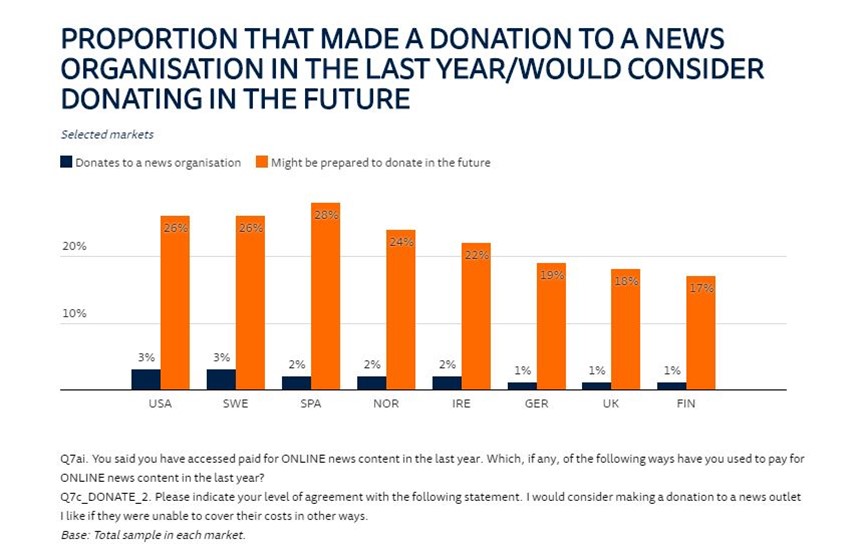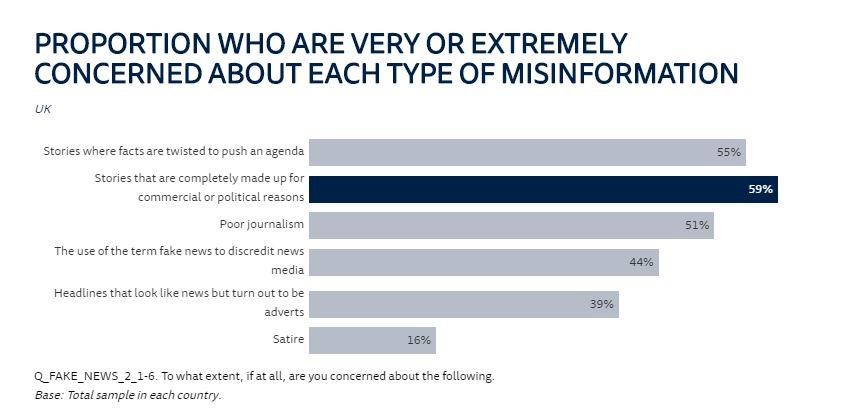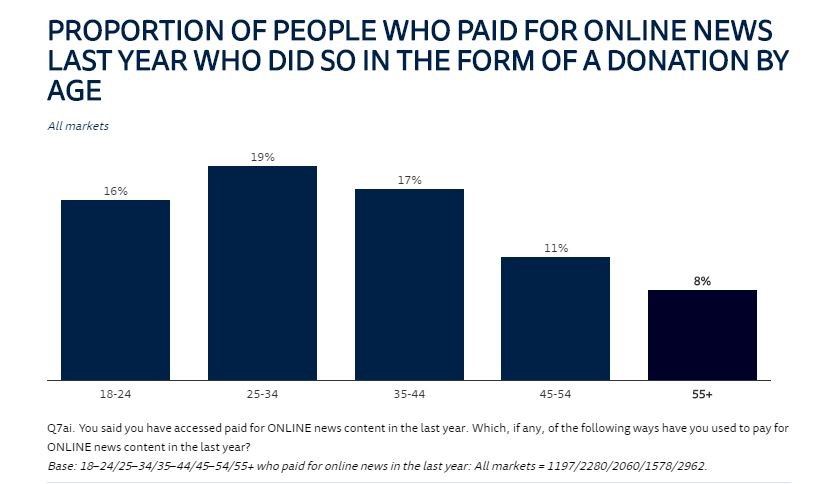
Rachel Brewster, Director of Marketing & Communications at WHS, looks at the challenges of how we engage with the news in the digital age.
“Were it left to me to decide whether we should have a government without newspapers or newspapers without a government, I should not hesitate to prefer the latter.”
Thomas Jefferson“Gradually I came to realise that people will more readily swallow lies than truth, as if the taste of lies was honey, appetizing, a habit.”
Martha Gellhorn
The great American journalist and war reporter Martha Gellhorn reported on virtually every major conflict of a 60-year career. But she did not live to report on the age of the internet. What would she make of “alternative truths”, the polarisation and poisoning of debate and the resurgence of propaganda that those of us who eagerly embraced the possibility and promise of the world wide web now bewilderingly ponder? Would she understand news as a commodity, freely available in bite-sized digital chunks over a 24/7 news cycle with “consumers” self-selecting what to read and hear within ever narrower echo chambers, largely unregulated and poorly challenged?
With the digital revolution, the ‘what’ of the news is only ever seconds away, via live streaming, through a myriad of news and social feeds, or indeed in the tweets of a certain president. There is little time for the ‘why’ and the ‘how’, and the absence of context – and, too often the propagation of downright lies – have fragmented public discourse. As our Rosewell Lecturer Tim Marshall reminded us in school recently, the direct and indirect consequences of this fragmentation can be seen from divided America to the gilets jaunes, from Brexit to authoritarian Hungary.
This is not to say that digital-first news has to be inferior to a nostalgic idea of ‘Fleet Street’. Indeed, the traditional ‘old’ press has seen rapidly declining circulation figures, advertisers taking their business to online providers and the slashing of editorial budgets. Fewer journalists cover ever more stories and quality has often suffered as a result. Highlighting the shortcomings of ‘digital-first’ news is not about ‘the scourge of the internet’ or wanting to turn back the clock. But pushed to the brink and with Jefferson’s words ringing out, the stakes have finally become too high: governments are looking to readdress the balance, regulate and hold Facebook, Google and others to account.
Market forces can and are acting more quickly than governments. Investors who had poured money into some of the newer kids on the block, such as BuzzFeed and Vice, amidst the hype for what they would represent, are now backing off, with the realisation that selling the news is not an easy money-maker. Multinationals that moved so much of their advertising spend to digital platforms have started to baulk at their brands being compromised by the positioning of an ad against inappropriate content online. Digital-first news organisations are being forced to restructure or consolidate in order to cut costs.
“A chill has gripped the once hot digital media sector, with companies formerly lauded as the future of news laying off staff and cutting costs to stay afloat.”
Anna Nicolaou and Patricia Nisson, FT
Meanwhile, newspapers that themselves underwent seismic changes to embrace digital (in a dual print and online offering) have started to resurrect themselves. They are winning back some of the advertisers they lost. They have campaigned hard to grow their online readership. The New York Times (4 million) and Washington Post (1 million plus) have dramatically increased their subscriptions; here in the UK, The Times announced in July that it had half a million digital subscribers. Even the Guardian, which has eschewed a subscription model and opted for a ‘supporter’ model instead, announced in its year end accounts last year that it was on track to break even this year, after years of staring into the financial abyss.

How else are quality newspapers trying to shift the tide?
Economies of scale
- News UK (which publishes The Telegraph, amongst other titles) and longstanding rivals the Guardian News and Media group have joined forces to allow advertisers to spend across their digital titles in one go, making significant savings and winning back custom.
- The most extensive example of investigative journalism in recent years – the Panama Papers (revealing the financial dealings of nefarious international figures and companies) – came about as a result of a collaboration of over 100 media partners, sharing resources and expertise, as well as costs. This sort of investigative journalism, involving months of research, would otherwise barely be possible.
Marketing
- Live events are big business and they have helped fuel international growth. The FT in particular has a strong global brand that sees it fill conferences across the world; the Guardian runs courses and lectures from King’s Place; alongside talks, merchandise and other spin-offs are ever more common in the drive for subscriber acquisition and retention.
- In-house press officers have long helped publicise stories from the newsroom, aiming for take-up across broadcast media and wider online channels. Marketing teams are now bigger, with news organisations making strategic appointments to spearhead engagement.
Focusing on comment
- Comment pages have grown in both their print and online offerings. Misinformation and erosion of trust have led many readers back to traditional brands for commentary on what to make of unprecedented political events.
“[Trump’s] presidency has created an urgency around news that has made old-fashioned journalism more in vogue then it has been probably since Watergate.”
The Economist

Normalising the paywall
- The way that ‘mainstream media’ has been dismissed for propagating ‘fake news’, all the while that mis-practice and international interference in elections is being investigated has of course galvanised readers, perhaps more than any campaign. (Though this powerful NYT campaign is worth a look and for an in-depth understanding of journalism in action, watch Reporting Trump’s First Year.) There has been a growing realisation that something we previously took for granted is not free. That news reporting with integrity and depth, which challenges our understanding of the world and holds politicians, business people and society to account is a craft of great value.
“Journalism is all about telling people about other people. It’s a craft dedicated to explaining how the world goes round, what is shaping our lives…”
Gillian Tett, FT

“News is an industry in transition, not in decline… The quality press has staged a remarkable resurrection.”
John Micklethwait, Bloomberg Businessweek
Yet it remains a precarious time for journalists and the media organisations that employ them. As educators, we have an important role to play. We will continue to foster news literacy through our Futureproof programme (run by our Director of Innovation and Digital Learning) and in lessons and co-curricular activities that interrogate the news. We give as many opportunities as possible to our girls to practise student journalism – whether it’s writing or editing the brilliant Unconquered Peaks, last year’s GDST student magazine Wave (spearheaded by WHS girls) or the monthly stories coming out of the Young Reporters Scheme and published in the local press online, championed by our English department. The Head’s challenge is for us to set reading a newspaper as homework – the logical next step.
And as global citizens, we now must all answer the question: What price are we willing to pay to protect quality news-gathering? So next time you’re looking for a birthday present, buy a (digital or non) subscription for a quality newspaper and spread the word.
“If we don’t hold them accountable, who will?
We can’t hold them accountable if we don’t have a newspaper.”
(From the film The Post)
Rachel Brewster
Director of Marketing & Communications
Sources and further reading / watching:
http://www.digitalnewsreport.org
https://www.theguardian.com/media/2018/jul/31/national-newspapers-in-uk-enjoy-first-print-advertising-rise-since-2010-research-finds
https://www.economist.com/business/2017/10/26/how-leading-american-newspapers-got-people-to-pay-for-news
https://www.bloomberg.com/news/articles/2018-05-03/john-micklethwait-the-future-of-news
https://www.politico.com/media/story/2015/05/the-60-second-interview-gillian-tett-us-managing-editor-financial-times-003775
https://techonomy.com/2017/03/whatever-happened-to-the-internets-promise/
https://www.bbc.co.uk/programmes/b0b8lfhc – Reporting Trump’s First Year: The Fourth Estate
https://www.engadget.com/2019/01/15/facebook-invest-local-newsrooms/
https://www.nytimes.com/2018/03/07/technology/two-months-news-newspapers.html
https://www.icij.org/investigations/panama-papers/pages/panama-papers-about-the-investigation/
Columns by Simon Kuper at FT.com
